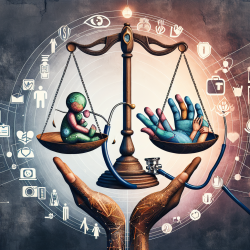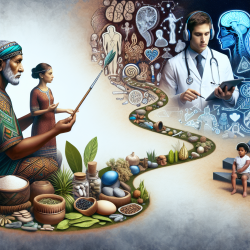Introduction
In the ever-evolving landscape of medical education, innovative teaching methods are crucial for preparing students for real-world challenges. One such method gaining traction is telesimulation, a technique that leverages telecommunication resources to simulate clinical scenarios. This approach is particularly beneficial in overcoming the logistical and financial challenges associated with traditional simulation-based learning, especially in the wake of the COVID-19 pandemic.
The Study: Insights from Telesimulation Training
Recent research titled Medical Students’ Perception of Telesimulation Training: A Qualitative Analysis explores the perceptions of medical students at the University of Ottawa regarding telesimulation training. This study provides valuable insights into how telesimulation can be optimized to enhance educational outcomes.
Key Findings
- Comparable Feedback: Students reported that the feedback received during telesimulation was on par with that from in-person sessions, highlighting its effectiveness in educational delivery.
- Technological Challenges: While telesimulation offers numerous advantages, students noted challenges such as non-ideal camera positioning and internet connectivity issues, which can impact the learning experience.
- Interpersonal Dynamics: The study revealed that while telesimulation is beneficial, it can sometimes feel impersonal, affecting the tutor-student and patient-student interactions.
- Skill Development: Despite some limitations, students acknowledged that telesimulation prepares them for future teleconsultations, a growing aspect of healthcare delivery.
Implications for Practitioners
For practitioners looking to enhance their skills, integrating telesimulation into their training regimen can be a game-changer. Here are some strategies to consider:
- Embrace Technology: Familiarize yourself with the latest telecommunication tools and platforms to ensure a seamless telesimulation experience.
- Focus on Feedback: Utilize the feedback mechanisms within telesimulation to refine your clinical skills and decision-making processes.
- Enhance Communication Skills: Practice effective communication techniques to overcome the perceived impersonality of virtual interactions.
- Address Technical Challenges: Work on optimizing your technical setup, including camera positioning and internet connectivity, to minimize disruptions during sessions.
Encouraging Further Research
While the current study provides a strong foundation, there is ample scope for further research. Practitioners are encouraged to explore the following areas:
- Investigating the impact of telesimulation on different medical disciplines.
- Exploring the perspectives of tutors and simulated patients to enhance the training process.
- Evaluating the long-term benefits of telesimulation in clinical skill development.
Conclusion
As the medical field continues to evolve, embracing innovative training methods like telesimulation is essential for practitioners. By leveraging the insights from recent research, practitioners can enhance their skills, improve patient interactions, and prepare for the future of healthcare delivery.
To read the original research paper, please follow this link: Medical Students’ Perception of Telesimulation Training: A Qualitative Analysis.










